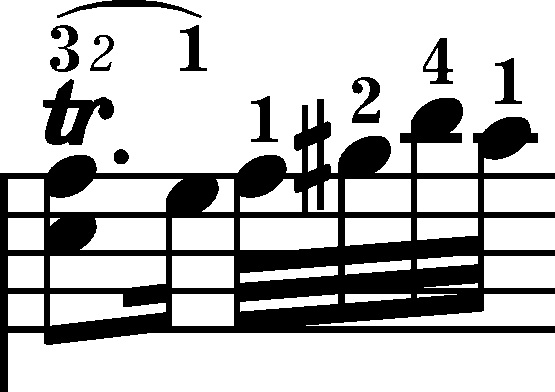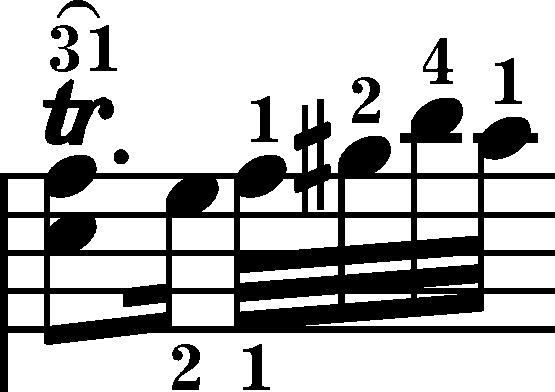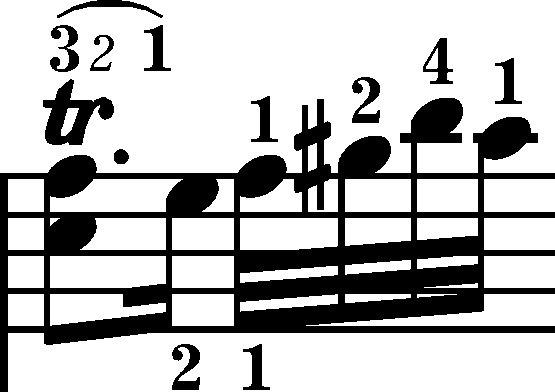




|
Fingering written in FED, contextual interpretation |
|

|
Fingering written in FED, different interpretation |
|

|
No teaching fingering |
|

|
Our suggestion |
Chopin fingering written in pencil to FED poses problems concerning its interpretation. First of all, one can see that it was written by two persons – the fingering from the beginning of the bar to the 1st demisemiquaver reveals Chopin's hand; the numerals over the next demisemiquavers were written by another person, which does not question its authenticity. In the Chopin part one can see corrections, yet they do not change the sense of the indications. When interpreted literally, the indications seem to describe two versions of the fingering – one in which e2 is to be played with the 1st finger and another one, in which the note is to be performed with the 2nd finger. It can be suspected that they were entered at a different time, which answers the natural hypothesis that the bottom numerals were added later. It leads to the following interpretations:
-
The original fingering, without the bottom numerals, '32' trill (smaller, italicised numeral completes the source entry for better legibility):
 ;
; -
The fingering including bottom numerals, version 1, '31' trill):
 ;
; -
The fingering including bottom numerals, version 2, '32...1' trill):
 .
.
It is worth observing that the addition of the bottom numerals did not have to be related to the change of fingering – it could have been an explanation (reminder?) of the meaning of the inaccurately placed (hence ambiguous) indications over the notes. In any case, it is the interpretations including the bottom numerals that are to be considered as final, out of which we choose the first one to the main text. For reasons of clarity, we move the bottom numerals, in this interpretation consistent with the upper ones, over the stave.
Compare the passage in the sources »
category imprint: Interpretations within context; Differences between sources
issues: Annotations in teaching copies, Annotations in FED
notation: Fingering
